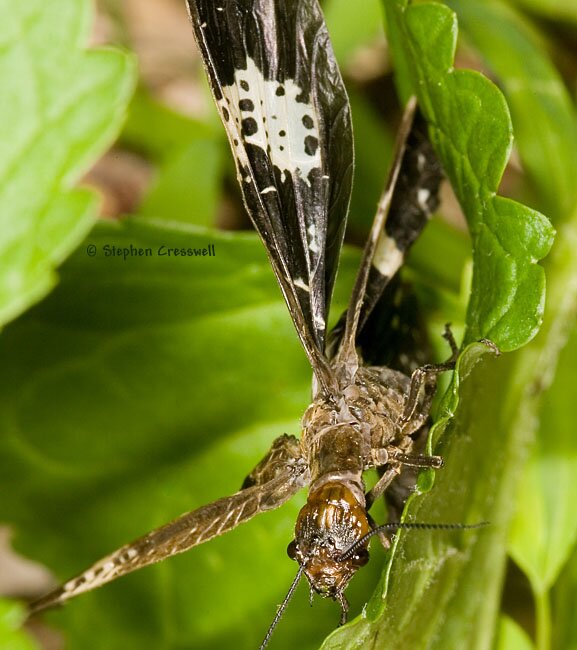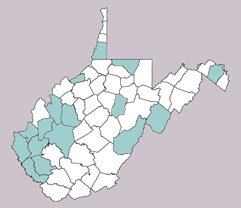
Family: Corydalidae
Subfamily: Chauliodinae
Length: typically about 22-28 mm
Tarter, Watkins, and Little (1975) studied the life history of Nigronia fasciatus along Hisey Fork in Cabell County.
The females laid their eggs on the lower surface of leaves that were 4-6 meters above the stream. On hatching (perhaps fourteen days after oviposition) the first instar larvae dropped into the stream below.
Tarter and his co-authors found the larval diet changed with the seasons, depending upon the availability of the arthropod prey. Year round, the most common prey consisted of an isopod, Asellus militaris, followed by various caddisfly larvae and then by midge larvae. Occasionally Nigronia fasciatus larvae ate other Nigronia fasciatus larvae.
Pupation occurs in earthen cells, often under rocks or moss, on shore but about 15-30 cm from the water. The pupal period lasted about 21 days.
Adults emerged along Hisey Fork starting on May 16, and the flight period for the species lasted ten days, with no adults seen after May 25.


Insects of West Virginia


